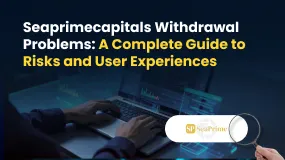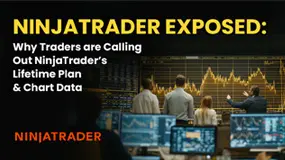简体中文
繁體中文
English
Pусский
日本語
ภาษาไทย
Tiếng Việt
Bahasa Indonesia
Español
हिन्दी
Filippiiniläinen
Français
Deutsch
Português
Türkçe
한국어
العربية
FX Global Code of Conduct: Building on Five Years of Progress
Abstract:Since its introduction five years ago, a lot has changed in the FX market. A common set of guidelines was issued to promote the integrity and effective functioning of the wholesale FX market

The BIS Foreign Exchange Working Group published the FX Global Code of Conduct on 25 May 2017 with the aim of providing a common set of guidelines to promote the integrity and effective functioning of the wholesale FX market.
Take Advantage of the Biggest Financial Event in London. This year we have expanded to new verticals in Online Trading, Fintech, Digital Assets, Blockchain, and Payments.
Since its introduction five years ago, a lot has changed in the FX market. The way we communicate, collaborate and the tools and technology we use have all been transformed.
The code itself has also evolved. The Global Foreign Exchange Committee (GFXC) updated 11 of the Code's 55 principles in July 2021 to strengthen its guidance on anonymous trading, algorithmic trading, transaction cost analysis, disclosures and settlement risk.
There is no doubt that the FX Global Code has improved practices across the industry while promoting transparency and spurring debate in key areas such as transaction cost analysis. But how can the GFXC build on achievements to date and maintain this momentum in years to come?
Promoting adoption among buy-side and corporates
One of the most important features of the FX Global Code is that is does not impose any legal or regulatory obligations on market participants. Instead, its a voluntary code of conduct designed to set out best practice and processes.
So, when it was first introduced, the big question was whether market participants would sign up and adhere to a voluntary code.
The BIS and many central banks took on the responsibility of driving adoption among key market participants. Some even required counterparties to sign the code and threatened to cut ties with those that didnt comply.
Combined with a general feeling that the industry needed to do better by standardising best practice and promoting transparency, this led to widespread adoption and there are now over 1,100 signatories on the global register.
But before we start patting ourselves on the back and saying job well done, its important to note that very few buy-side and corporate firms have signed up the FX Global Code.
In fact, of the 1,100+ signatories, there are only 80 asset managers, 30 corporates and 13 pension funds. In many cases, these types of firms arent aware of the code despite needing the code the most, given that many continually get a bad deal and struggle to achieve best execution and full transparency.
The GFXC recognised the lack of buy-side adoption as an issue back in 2018 and it set up a specific outreach working group to facilitate more adoption among these types of firms. At the time, only 60 buy-side firms had signed up the code. Fast forward four years and only 93 have signed up.
It‘s vital that we increase awareness of the code among buy-side firms and corporates as it exists for their protection. It enables them to scrutinise their liquidity providers and partners’ processes against best practice, ensuring they achieve best execution and get the transparency they deserve.
Renewing commitments to the code
In July 2021, the GFXC published the updated version of the code following an extensive process of consultation with the foreign exchange committees around the world and a public request for feedback in April of the same year.
Guy Debelle, GFXCs then chair, said: “The changes to the Code will ensure that the Code continues to promote the integrity of the market. Many of the changes are designed to bring about greater transparency in an increasingly complex market.”
The GFXC acknowledged that these changes would affect certain parts of the market more than others and said it anticipated that it would take around 12 months for practices to be brought into alignment with updated principles. And, this year, we have started to see some institutions, including the Bank of England, renew their commitment to the new code which is positive.
What I would like to see is the GFXC requiring all signatories to review and renew their commitments to the updated FX Global Code, whether theyre affected by the new changes or not.
Many signed up five years ago and so much has changed in that time with the advent of remote working, adoption of new technology and the great resignation which saw many change jobs.
A formal renewal process would help ensure that all signatories remain compliant and committed to the code and its principles.
Focusing on smaller market participants
The FX Global Code has been welcomed by the FX community and provided a forum for participants to debate a range of issues, from algorithmic trading to last look and TCA.
That said, it‘s important we don’t rest on our laurels and see 1,100+ signatories as enough. We need to focus on the smaller market participants (e.g. buy-side and corporates) as together they make up a significant portion of the market. These are the firms which benefit most from the best practice set out in the code and, as an industry, we need to make sure we bring them on this journey with us.
In summary, we believe the FX Global Code should be for the whole FX market, not just for the wholesale FX market. Theres still more to do to get there.

Disclaimer:
The views in this article only represent the author's personal views, and do not constitute investment advice on this platform. This platform does not guarantee the accuracy, completeness and timeliness of the information in the article, and will not be liable for any loss caused by the use of or reliance on the information in the article.
Read more

Seaprimecapitals Withdrawal Problems: A Complete Guide to Risks and User Experiences
Worries about Seaprimecapitals withdrawal problems and possible Seaprimecapitals withdrawal delay are important for any trader. Being able to get your money quickly and reliably is the foundation of trust between a trader and their broker. When questions come up about this basic process, it's important to look into what's causing them. This guide will tackle these concerns head-on, giving you a clear, fact-based look at Seaprimecapitals' withdrawal processes, user experiences, and trading conditions. Most importantly, we'll connect these real-world issues to the single most important factor behind them: whether the broker is properly regulated. Understanding this connection is key to figuring out the real risk to your capital and making a smart decision.

iFX Brokers Review: Do Traders Face Withdrawal Issues, Deposit Credit Failures & Free Coupon Mess?
Have you had to pay several fees at iFX Brokers? Had your trading profit been transferred to a scamming website, causing you losses? Failed to receive withdrawals from your iFX Brokers trading account? Has your deposit failed to reflect in your trading account? Got deceived in the name of a free coupon? Did the broker officials not help you in resolving your queries? Your problems resonate with many of your fellow traders at iFX Brokers. In this iFX Brokers review article, we have explained these problems and attached traders’ screenshots. Read on!

NinjaTrader Exposed: Why Traders are Calling Out NinjaTrader’s Lifetime Plan & Chart Data
Did NinjaTrader onboard you in the name of the Lifetime Plan, but its ordinary customer service left you in a poor trading state? Do you witness price chart-related discrepancies on the NinjaTrader app? Did you have to go through numerous identity and address proof checks for account approval? These problems occupy much of the NinjaTrader review online. In this article, we have discussed these through complaint screenshots. Take a look!

Questrade Review Pros, Cons and Regulation
Is Questrade legit? Yes—CIRO regulated broker offering stocks, ETFs, forex, CFDs, bonds, and more with low fees and modern platforms.
WikiFX Broker
Latest News
Interactive Brokers Expands Access to Taipei Exchange
Simulated Trading Competition Experience Sharing
WinproFx Regulation: A Complete Guide to Its Licensing and Safety for Traders
Axi Review: A Data-Driven Analysis for Experienced Traders
INZO Regulation and Risk Assessment: A Data-Driven Analysis for Traders
Pepperstone CEO: “Taking Down Scam Sites Almost Every Day” Becomes “Depressing Daily Business”
The CMIA Capital Partners Scam That Cost a Remisier Almost Half a Million
Is Seaprimecapitals Regulated? A Complete Look at Its Safety and How It Works
eToro Cash ISA Launch Shakes UK Savings Market
Cleveland Fed's Hammack supports keeping rates around current 'barely restrictive' level
Currency Calculator



